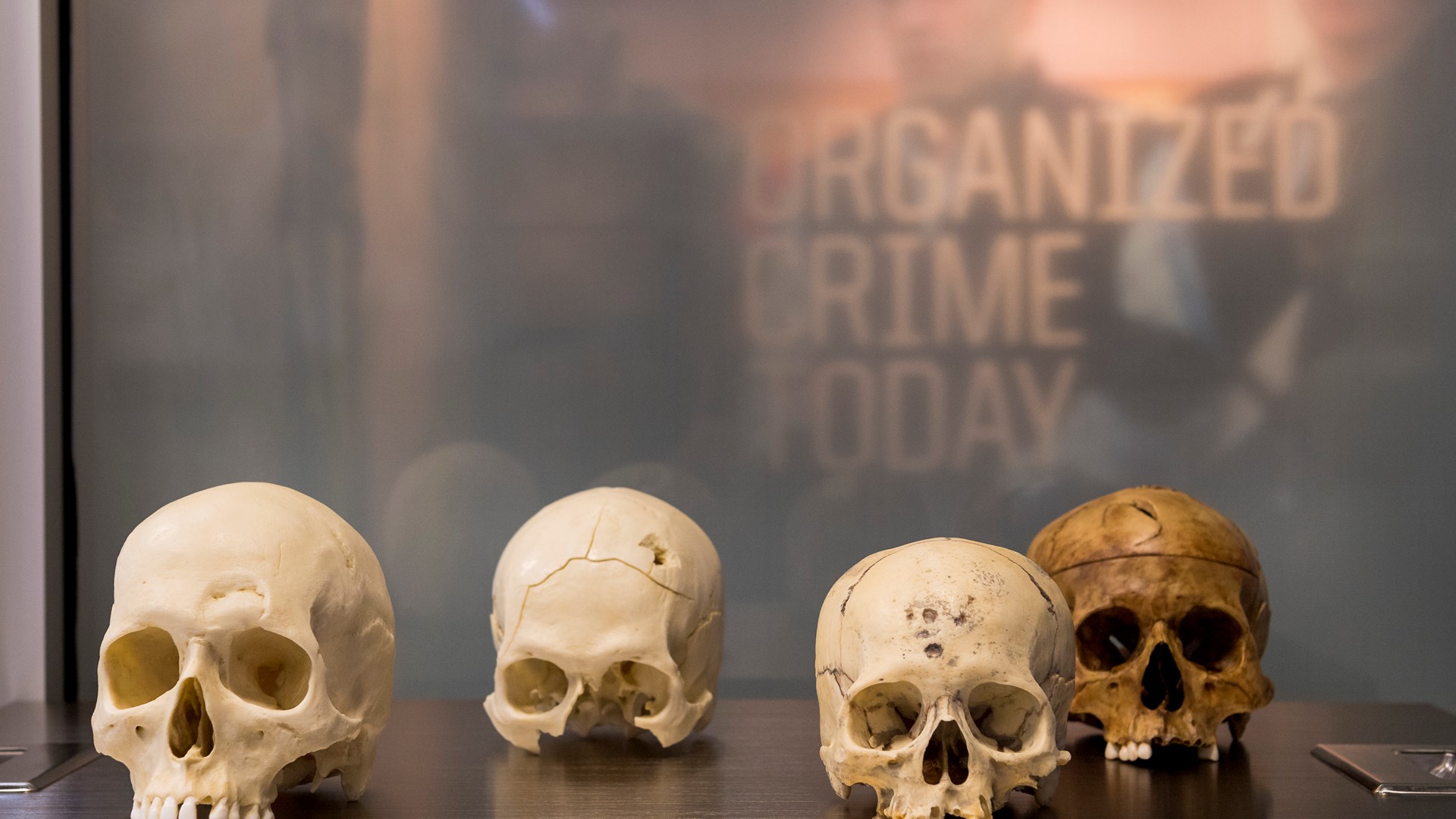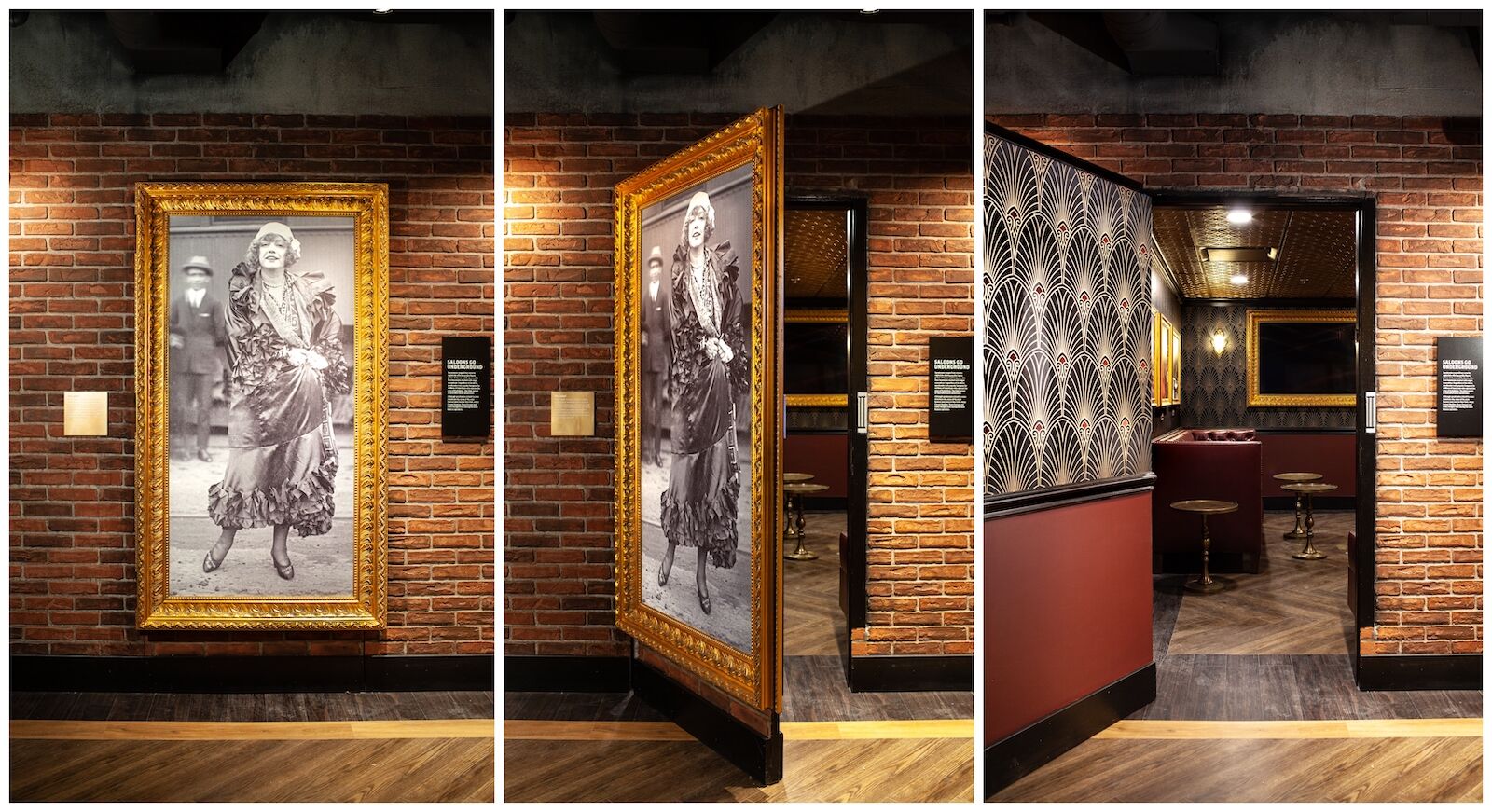Sign up with the Ranks: Explore The Mob Museum Jobs and Opportunities
Sign up with the Ranks: Explore The Mob Museum Jobs and Opportunities
Blog Article
Introducing the Untold Stories of Organized Criminal Offense at This Historical Gallery
As soon as flourished within its wall surfaces,The historical museum stands as a quiet witness to the shadowy transactions and clandestine procedures that. As site visitors step through the grand entrance, they are carried back in time to a period where organized criminal offense reigned supreme. The exhibitions carefully curated within its halls provide a peek into the forbidden globe of Prohibition-era bootlegging, bold financial institution break-ins, and the enigmatic figures who managed these immoral tasks. Past the surface attraction of criminal intrigue exists a much deeper, extra complicated narrative waiting to be deciphered - one that challenges sheds and assumptions light on the detailed internet of power, deceptiveness, and betrayal that specified an era.
Prohibition Era Bootlegging Chronicles
During the Prohibition Era, the illegal industry of bootlegging grew in the middle of the restrictions on alcohol production and distribution. This period in American history, from 1920 to 1933, saw the nationwide ban on the sale, production, and transportation of alcohol. Bootleggers took the chance to supply the demand for alcohol by contraband and producing illicit spirits, leading to the rise of the mob distributes.
Bootlegging procedures were sophisticated, with networks covering throughout cities and even states. Criminal organizations such as the infamous Chicago Clothing and the Purple Gang in Detroit came to be prominent players in the bootlegging scene, generating riches and power with unlawful alcohol trade. These groups commonly considered violence and corruption to protect their interests and expand their procedures.
The appeal of fast earnings drove many individuals to take part in bootlegging activities, regardless of the threats involved. Speakeasies, concealed facilities where alcohol was offered illegally, became preferred locations for socializing and celebration throughout this time around. The heritage of bootlegging during the Prohibition Era continues to mesmerize audiences with its tales of disobedience, criminal offense, and the strength of the human spirit in the face of hardship.

Bank Heists and Infamous Robberies
Financial institution heists and infamous burglaries have actually long been a resource of attraction for both legislation enforcement and the public, showcasing daring criminal acts that test safety and security actions and captivate the creativity. These notorious criminal activities frequently include careful planning, elaborate schemes, and high-stakes dangers.
These daring break-ins have motivated various motion pictures, publications, and docudramas, bolstering the aura bordering these risky wrongdoers. The appeal of bank robberies hinges on the adrenaline-pumping nature of the crimes, the elaborate planning entailed, and the large audacity of those who attempt them. the mob museum reviews. Despite improvements in security modern technology, bank heists remain to record the public's fascination and stay a popular function in the record of organized criminal activity history
Notorious Mobsters and Criminal Offense Lords
Popular for their cunning methods and iron-fisted control, infamous mobsters and crime lords have left an enduring mark on the annals of the mob history. These numbers, typically running in the shadows, have constructed vast criminal empires with violence, corruption, and intimidation. Among the most notorious mobsters is Al Capone, whose control Chicago during the Restriction age strengthened his placement as a ruthless criminal activity boss. Capone's criminal activities, including bootlegging and racketeering, made him a symbol of the mob in America.
Another well-known mobster, Lucky Luciano, played a critical function in the formation of the contemporary Italian-American Mafia. Luciano's tactical partnerships and ingenious business structure transformed the underworld, gaining him great site the title of the "Dad of Organized Crime."
Furthermore, figures like John Gotti, recognized as the "Teflon Don," and Pablo Escobar, the fierce leader of the Medellín Cartel, further exhibit the power and influence possessed by these crime lords. Their tales, though often glamorized in pop culture, act as plain suggestions of the dark side of human nature and the enduring attraction of the mob.
Illicit Procedures Subjected
Exposing the covert functions of criminal enterprises, the direct exposure of illegal operations drops light on the intricate internet of corruption and deceit that underpins the mob. At the historic museum dedicated to untangling the keys of organized criminal activity, visitors are challenged with the raw realities of prohibited tasks that have tormented society for decades.
With thoroughly curated displays and thorough accounts, the museum explores the clandestine tasks that have fueled criminal companies worldwide. the mob museum reviews. From cash laundering and drug trafficking to human contraband and extortion, the immoral operations revealed within the museum's wall surfaces provide a peek into the dark underbelly of criminal distributes
Visitors are given a firsthand take a look at the methods and strategies employed by these organizations to evade police and preserve control over their immoral empires. The gallery's representation of these procedures offers as a raw suggestion of the recurring fight versus arranged criminal activity and the value of unmasking their prohibited activities for the higher good.
Dark Underbelly of Criminal History
The gallery's expedition of immoral operations perfectly leads site visitors right into the intricate background of the dark underbelly of criminal tasks extending years. Diving deeper into the displays, site visitors are confronted with the chilling facts of the mob, from the rise of notorious criminal activity syndicates to the shadowy transactions that shaped entire eras. Displays thoroughly information the development of criminal business, dropping light on the clandestine procedures that prowled below the surface of culture.

In addition, the gallery does not shy away from dealing with the social, economic, and political implications of well organized crime, highlighting exactly how these immoral tasks left an enduring imprint on the material of culture. By beaming a light on the dark underbelly of criminal background, the museum invites visitors to assess the intricate interaction between criminal activity, power, and humanity.
Conclusion
Finally, the historical gallery reveals the unknown stories of organized criminal activity with exhibits showcasing the Restriction Age bootlegging chronicles, financial institution heists, notorious burglaries, infamous mobsters, and illegal procedures. Site visitors are exposed to the dark underbelly of criminal background, dropping light on the shadowy world of the mob. The gallery serves as a suggestion of the past and the impact of criminal activities on culture.
Distinguished for their shrewd strategies and iron-fisted control, well-known mobsters and crime lords have actually left an indelible mark on the annals of well organized criminal activity background. Capone's criminal tasks, consisting of bootlegging and racketeering, made him a symbol of organized criminal offense in America.
Diving much deeper into the exhibits, site visitors are faced with the cooling facts of orderly criminal activity, from the rise of well-known criminal activity distributes to the shadowy transactions that formed entire ages.In conclusion, the historical museum introduces the unimaginable stories of well organized criminal activity through exhibitions showcasing the Restriction Era bootlegging narrates, financial institution break-ins, infamous break-ins, infamous mobsters, and illicit procedures. Site visitors are exposed to the dark underbelly of criminal history, losing light on the shadowy world of organized criminal activity.
Please visit one of our local supporters - Cash Oasis Cash Advance Las Vegas
Report this page